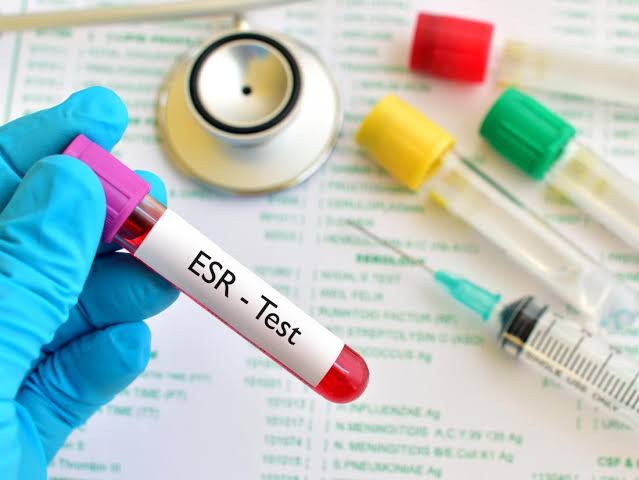Erythrocyte Sedimentation Rate (ESR) test is a blood test used by medical professionals to identify inflammation in the body so that they can successfully diagnose inflammatory disorders. Activation of certain cells by your immune system in response to an injury or to combat foreign substances such as bacteria, viruses, or poisons causes inflammation, and your doctor can also identify a variety of other inflammatory illnesses, such as autoimmune diseases, certain cancers, and blood disorders.
However, an ESR test cannot give a precise diagnosis. It can only confirm or rule out certain illnesses or disorders to narrow down a diagnosis. The doctor will consider the result of this test, in addition to results from other tests, a physical examination, and any symptoms that you’re having.
Why is the ESR Test Performed?
An ESR test’s primary goal is to find abnormally high or low levels of inflammation in the body. Inflammation only happens as an immune system reaction to various health problems, which means these are medical conditions that need immediate attention and treatment. The main purposes of ESR testing are diagnosis and monitoring, so let’s take a look at both processes.
- Diagnosis: An abnormal ESR test result can be caused by many health issues, hence the test cannot be used to identify illnesses by itself, however, it can assist in the detection of several health issues, including renal disease, blood disorders, autoimmune illnesses, and infections when paired with other tests.
- Monitoring: Following a diagnosis, monitoring entails routinely evaluating a patient’s health and an ESR test may be performed periodically to monitor changes in the patient. It can also be used to evaluate how well a patient is responding to particular types of therapies so that doctors can find the correct treatment option.
The Importance of ESR Tests
Health conditions that induce inflammation can be diagnosed with the use of an ESR test, and an ESR can be used to keep an eye on an existing problem as well. Blood is drawn from an arm vein and placed into a long, thin tube for the test, and after allowing the blood to settle, the “sedimentation rate” is measured.
Erythrocytes group together when there is inflammation, and compared to regular red blood cells, these aggregates are thicker. These red blood cells will therefore gather together and swiftly descend to the tube’s bottom if there is inflammation, but a lack of inflammation will cause the red blood cells to settle more slowly. After some time, the top of the tube will contain a clear liquid (plasma), devoid of red blood cells, and after an hour, the ESR test measures the height of the plasma column at the top of the tube.
If fewer cells have settled, that means you have low ESR, and if a large number of cells have settled, that means you have inflammation in your body, and medical treatment is necessary. This is why ESR tests are so important for patient care because sometimes hidden inflammation cannot be diagnosed by doctors in any other way.
How to Prepare for the ESR Test?
A sample of your blood is taken from an arm vein for the ESR test, and it can be done in a hospital, lab testing facility, or doctor’s office because it is a simple process. Most importantly, an ESR test doesn’t require any extra test preparation, but be careful to let your doctor know about any medications or supplements you take before the test, since some medications and supplements may have an impact on the test results.
The ESR Test Process and Duration
The medical practitioner collecting your blood sample will first clean a tiny area of your skin close to a vein with an alcohol swab, and after that, a needle will be inserted into the vein to draw the blood. Drawing blood for an ESR test typically just takes a few minutes to complete, and the discomfort that you experience when the needle punctures your skin and is taken out of your arm might just feel like a pinch or sting. You can have some soreness or bruises at the puncture site, but after the test, there are no limitations on your activities.
ESR Test Result Analysis
The ESR test measures the rate at which the red blood cells in your blood sample settle to the bottom of a test tube, and the test result is expressed in millimeters per hour (mm/h). An unusually high ESR indicates that the RBCs dropped more quickly than anticipated, and this often occurs as a result of the RBCs adhering to one another due to increased protein content. An increased ESR can result from a variety of causes and is typically associated with inflammatory disorders.
Normal ESR Test Results
Females under 50 – between 0 and 20 mm/hr.
Males under 50 – between 0 and 15 mm/hr.
Females over 50 – between 0 and 30 mm/hr.
Males over 50 – between 0 and 20 mm/hr.
Children – between 0 and 10 mm/hr.
No specific illness is diagnosed by a higher-than-normal or lower-than-normal ESR test result, and it just signals that there may be inflammation in your body and that more tests are necessary. A value close to zero would be unusually low but these tests vary from person to person so there is no perfect result.
Causes of High ESR Levels in Test Results
- Higher-than-normal ESR test findings are linked to autoimmune disorders, such as lupus, temporal arteritis, polymyalgia rheumatica, and hyperfibrinogenemia.
- A high ESR test result might have several reasons, including local or widespread infection, tissue injury, trauma, certain types of cancer, pregnancy, anemia, kidney disease, diabetes, heart disease, and obesity.
- The existence of malignant tumors may be indicated by an excessively high ESR, particularly if no inflammation is present, however, doctors will require more tests to diagnose it without doubt.
Treatment Options After Receiving Your ESR Test Results
Your doctor could decide to request other tests based on your ESR blood test results to confirm the initial test’s findings. Your doctor may be able to determine the precise source of your inflammation with the use of these tests, and ESR tests can also be used to track your ESR levels during treatment to assess how effectively the therapies are working.
- Inflammation – Your doctor could suggest using corticosteroid treatment to decrease inflammation while taking a nonsteroidal anti-inflammatory medicine, such as ibuprofen or naproxen.
- Infection – Your doctor will probably recommend an antibiotic to treat any bacterial infection that may be the source of your infection.
- An underlying illness – If your doctor feels an underlying issue is causing your high ESR, they may send you to a specialist who can properly identify and treat the condition.
Final Remarks
Your doctor may prescribe an ESR blood test to help assess the level of inflammation in your body to rule out or identify a range of inflammatory diseases. Your ESR levels may be impacted by a broad range of acute and chronic illnesses, including infections, some cancers, and autoimmune and cardiovascular disorders, and the doctor could recommend more testing or send you to a specialist based on the test results.
If your doctor has suggested an ESR test for you, contact Pathkind Labs and make an appointment today to get the ESR test done!








